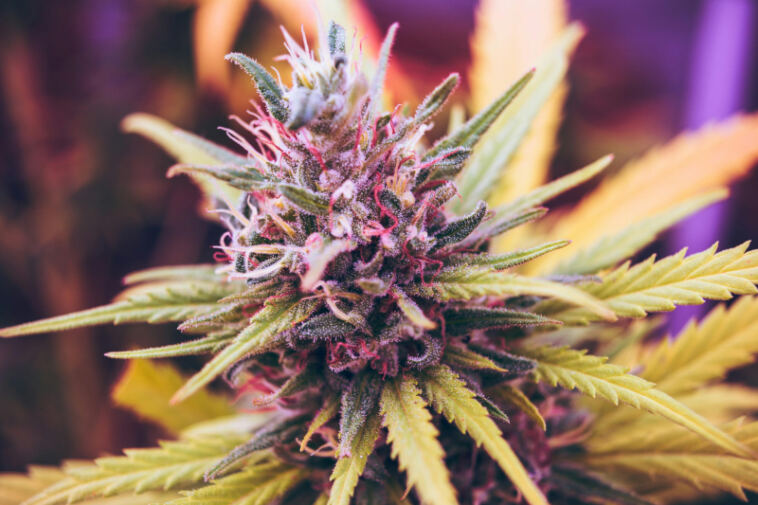- Like
- SHARE
- Digg
- Del
- Tumblr
- VKontakte
- Flattr
- Buffer
- Love This
- Save
- Odnoklassniki
- Meneame
- Blogger
- Amazon
- Yahoo Mail
- Gmail
- AOL
- Newsvine
- HackerNews
- Evernote
- MySpace
- Mail.ru
- Viadeo
- Line
- Comments
- Yummly
- SMS
- Viber
- Telegram
- JOIN
- Skype
- Facebook Messenger
- Kakao
- LiveJournal
- Yammer
- Edgar
- Fintel
- Mix
- Instapaper
- Copy Link
In the lush fields of the burgeoning cannabis industry, a revolution is quietly taking root. As the demand for cannabis cultivation continues to surge, so too does the need for sustainable farming practices. Enter the world of green growth – where environmentally-conscious methods are redefining the way we cultivate cannabis. From renewable energy sources to organic soil amendments, these innovative techniques are paving the way for a greener, more sustainable future for the cannabis industry. Join us as we explore the world of sustainable cannabis cultivation methods and discover how we can all do our part to promote a healthier planet.
– Harnessing Solar Power: Implementing Renewable Energy Solutions in Cannabis Cultivation
Sustainability is at the forefront of modern agriculture, and the cannabis industry is no exception. By harnessing the power of the sun, cannabis cultivators can not only reduce their carbon footprint but also save on energy costs in the long run. Implementing renewable energy solutions, such as solar power, is a crucial step towards making cannabis cultivation more environmentally friendly.
One of the key advantages of using solar power in cannabis cultivation is its ability to provide a consistent and reliable source of energy. Unlike traditional fossil fuels, the sun’s energy is renewable and abundant, making it a sustainable choice for powering indoor grow operations. By investing in solar panels and other solar technologies, cultivators can ensure a constant supply of clean energy for their plants, leading to healthier and more sustainable harvests.
Furthermore, using solar power can help cannabis cultivators reduce their carbon footprint and contribute to the fight against climate change. By lowering their reliance on nonrenewable energy sources, cultivators can mitigate the environmental impact of their operations and promote a greener future for the industry. Embracing sustainable practices like harnessing solar power is not only good for the planet but also for the bottom line, making it a win-win solution for cannabis cultivators looking to grow their business responsibly.
– Composting and Organic Fertilizers: Developing Sustainable Soil Health Practices
Cultivating cannabis in a sustainable and environmentally-friendly manner is becoming increasingly important in today’s world. By incorporating composting and organic fertilizers into your cultivation practices, you can not only improve the health of your soil but also reduce your carbon footprint. Composting allows for the decomposition of organic materials, creating nutrient-rich soil that is beneficial for the growth of cannabis plants.
Organic fertilizers, such as compost tea and worm castings, provide essential nutrients to the soil without the use of harmful chemicals. This promotes healthier plant growth and can lead to increased yields. By utilizing these natural fertilizers, you can ensure that your cannabis plants are not only thriving but also free from potentially harmful synthetic substances.
Implementing sustainable soil health practices like composting and using organic fertilizers is not only beneficial for the environment but also for the quality of your cannabis crop. By prioritizing green growth in your cultivation methods, you are contributing to a more sustainable future for the cannabis industry and promoting healthier, more natural products for consumers.
– Water Conservation Strategies: Efficient Irrigation Systems for Cannabis Farms
In the quest for sustainable cannabis cultivation methods, implementing water conservation strategies is crucial. Efficient irrigation systems can significantly reduce water usage on cannabis farms, helping to preserve this precious resource for future generations. By adopting eco-friendly practices, such as drip irrigation and smart watering systems, growers can not only save water but also improve plant health and overall crop yield.
Benefits of Efficient Irrigation Systems:
- Reduce water waste by delivering water directly to the roots of plants
- Minimize runoff and evaporation, optimizing water usage
- Improve nutrient uptake and plant growth for healthier, more resilient crops
Maximizing Water Efficiency with Drip Irrigation:
Utilizing drip irrigation technology ensures that water is delivered precisely where it’s needed, minimizing waste and maximizing efficiency. By using a network of tubes and emitters, drip irrigation allows growers to control the flow of water, ensuring that each cannabis plant receives the appropriate amount of moisture. This targeted approach not only conserves water but also reduces the risk of mold, mildew, and other water-related issues.
| Efficient Irrigation System | Water Savings (%) |
|---|---|
| Drip Irrigation | Up to 50% |
| Smart Watering Systems | Up to 30% |
– Integrated Pest Management: Eco-Friendly Approaches to Controlling Pests in Cannabis Cultivation
When it comes to cannabis cultivation, adopting sustainable and eco-friendly practices is becoming increasingly important. Integrated Pest Management (IPM) offers a holistic approach to controlling pests that minimizes harm to the environment and promotes long-term plant health. By utilizing a combination of biological controls, cultural practices, and environmentally safe pesticides, growers can effectively manage pests without relying on harmful chemicals.
One key component of IPM in cannabis cultivation is the use of beneficial insects. Ladybugs, predatory mites, and parasitic wasps can be introduced into the growing environment to prey on harmful pests such as spider mites and aphids. These natural predators help to keep pest populations in check, reducing the need for chemical interventions. Additionally, implementing proper sanitation practices, such as removing plant debris and regularly cleaning equipment, can help prevent pest infestations from taking hold.
Furthermore, utilizing eco-friendly pesticides derived from natural sources, such as neem oil or insecticidal soap, can provide effective pest control without leaving harmful residues on the plants. These products are biodegradable and pose minimal risk to beneficial insects, making them a safer choice for both the environment and consumer health. By prioritizing sustainable cultivation methods, growers can not only protect the ecosystem but also produce cleaner, healthier cannabis products for consumers.
– Regenerative Agriculture Practices: Restoring Ecosystem Balance in Cannabis Production
Regenerative agriculture practices offer an innovative approach to cultivating cannabis while prioritizing environmental sustainability and ecosystem restoration. By implementing these methods, cannabis producers can contribute to restoring ecosystem balance and promoting biodiversity in their cultivation practices.
One key aspect of regenerative agriculture in cannabis production is the use of natural inputs and resources to support plant growth and health. This includes utilizing organic fertilizers, compost, cover crops, and integrated pest management techniques to enhance soil fertility and reduce the reliance on synthetic chemicals.
Additionally, regenerative agriculture practices in cannabis cultivation emphasize water conservation and efficient resource management. By implementing techniques such as rainwater harvesting, drip irrigation, and mulching, growers can minimize water usage and reduce their environmental impact while promoting a more sustainable approach to cannabis production.
Q&A
Q: What is green growth and why is it important in cannabis cultivation?
A: Green growth refers to sustainable practices that minimize environmental impact and promote long-term viability. In cannabis cultivation, green growth is crucial to protect the surrounding ecosystem and ensure the longevity of the industry.
Q: What are some sustainable methods used in cannabis cultivation?
A: Some sustainable methods used in cannabis cultivation include organic farming practices, water conservation techniques, energy-efficient lighting systems, and integrated pest management strategies.
Q: How do these sustainable methods benefit the environment?
A: These sustainable methods benefit the environment by reducing water and energy consumption, minimizing pesticide use, and promoting biodiversity. They also help mitigate the carbon footprint of cannabis cultivation and preserve natural resources.
Q: Are there any challenges associated with implementing green growth practices in cannabis cultivation?
A: Yes, some challenges include the initial investment required for sustainable infrastructure, regulatory hurdles related to organic certification, and the need for education and training on eco-friendly methods among cultivators.
Q: How can consumers support green growth in the cannabis industry?
A: Consumers can support green growth in the cannabis industry by choosing products from environmentally conscious brands, advocating for sustainable practices in cultivation, and staying informed about the impact of their purchases on the environment.
Key Takeaways
As we continue to explore the intersection of sustainable practices and cannabis cultivation, it is clear that the pursuit of green growth is not just a trend, but a necessary evolution in the industry. By implementing eco-friendly methods and investing in innovative technologies, we can ensure a more sustainable future for cannabis production. Together, we can cultivate a greener and healthier world, one plant at a time. Thank you for joining us on this journey towards a more sustainable and environmentally conscious cannabis industry. Let’s continue to grow responsibly, for the betterment of our planet and future generations.


